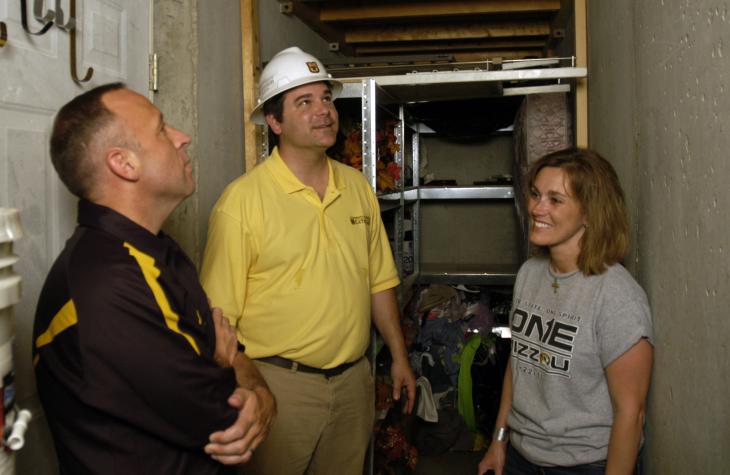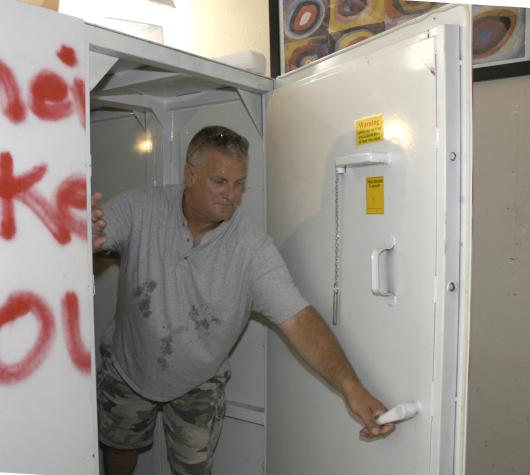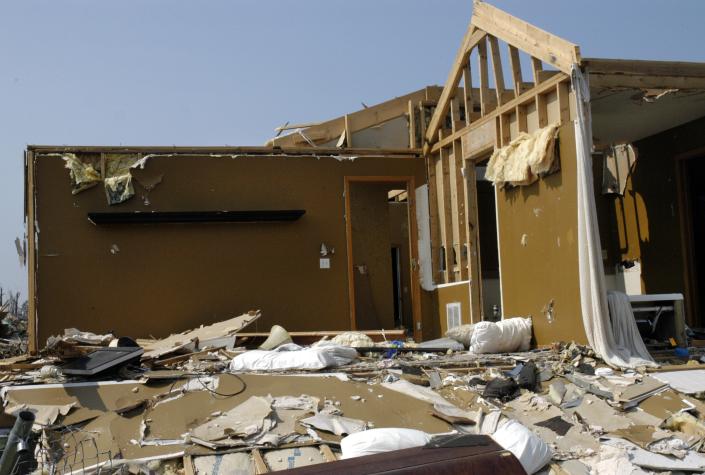As communities pick up the pieces, builders and homeowners take a closer look at safe rooms
JOPLIN, Mo. – Harold Noirfalise used to curse the big steel box in the garage of his Joplin home. It was there when he and his wife, Brenda, bought the house a couple years ago. The box shared space with a pickup, a car and a workshop where he built radio-controlled model airplanes, making for a crowded garage.
Noirfalise stopped cursing the box after May 22, the day a huge tornado destroyed thousands of buildings and claimed more than 150 lives in Joplin. The steel box—actually a tornado safe room—may have saved his life. “I’ll never say a bad word about it again.”
Noirfalise was home alone when the tornado sirens sounded. Just before his TV went dark, he learned that a monster twister was headed his way. He had just enough time to dash across the street to warn neighbors then grab his dog and hurry inside the safe room. “Right when I shut the door, put the pin in and sat down in the chair, I could hear my roof leaving.”
As Joplin gets ready to rebuild, architect Jeff Barber, a University of Missouri Extension regional specialist based in Springfield, is working with builders, neighborhood associations, insurers and others to incorporate safe rooms into new and existing homes and businesses.
Until recently, many viewed safe rooms as a luxury for safety-conscious homeowners willing to pay an extra $3,000-$5,000. But Barber thinks that builders and homebuyers in tornado-prone areas are starting to look on safe rooms as a basic feature.
“When you look at the kind of devastation that we have in a community like this, you really can’t put a price tag on it,” Barber said.
Safe rooms can take many forms, such as off-the-shelf shelters like Noirfalise’s “Twister Safe.” If you are building a new home, however, you can integrate the safe room into the design of the house.
That’s what Matt and Claire Adrian did several years ago with their new home when a contractor suggested turning the space under the front porch into a safe room rather than filling it in. The room, easily accessible from the basement, allowed the Adrians and three of their four daughters (the oldest daughter, an MU sophomore, was out of town) to ride out the tornado safely and comfortably. When Matt and Claire saw the wreckage—roof and most exterior wall gone, car pummeled by debris and wedged under a big chunk fallen lumber—they were grateful their daughters had been spared both physical danger and emotional trauma.
Another approach, Barber said, is to strengthen and reinforce an interior room such as a closet, pantry or bathroom.
Those rooms are already your best bet during a tornado if you don’t have anywhere else to go, but putting the “safe” in safe room means using materials, designs and construction techniques that make the room likely to withstand extreme winds and protect occupants from heavy, fast-moving debris.
The Federal Emergency Management Administration (FEMA) has issued detailed designs and specifications for various types of safe rooms and shelters. The guidelines are based on extensive research, including surveys of tornado debris fields in Oklahoma and studies at a Texas Tech lab where scientists test materials and building methods with a pneumatic cannon that can propel lumber, heavy steel pipes and other dangerous debris at high speeds.
A U.S. Department of Housing and Urban Development mortgage insurance program allows banks to lend homebuyers an additional amount up to $5,000 for installing a safe room built to FEMA specifications.
With what’s left of the Noirfalise home slated for demolition, Harold and Brenda are making plans to build a new house. One thing is definite: it’s going to have a bigger garage so there will be plenty of space for the safe room.



